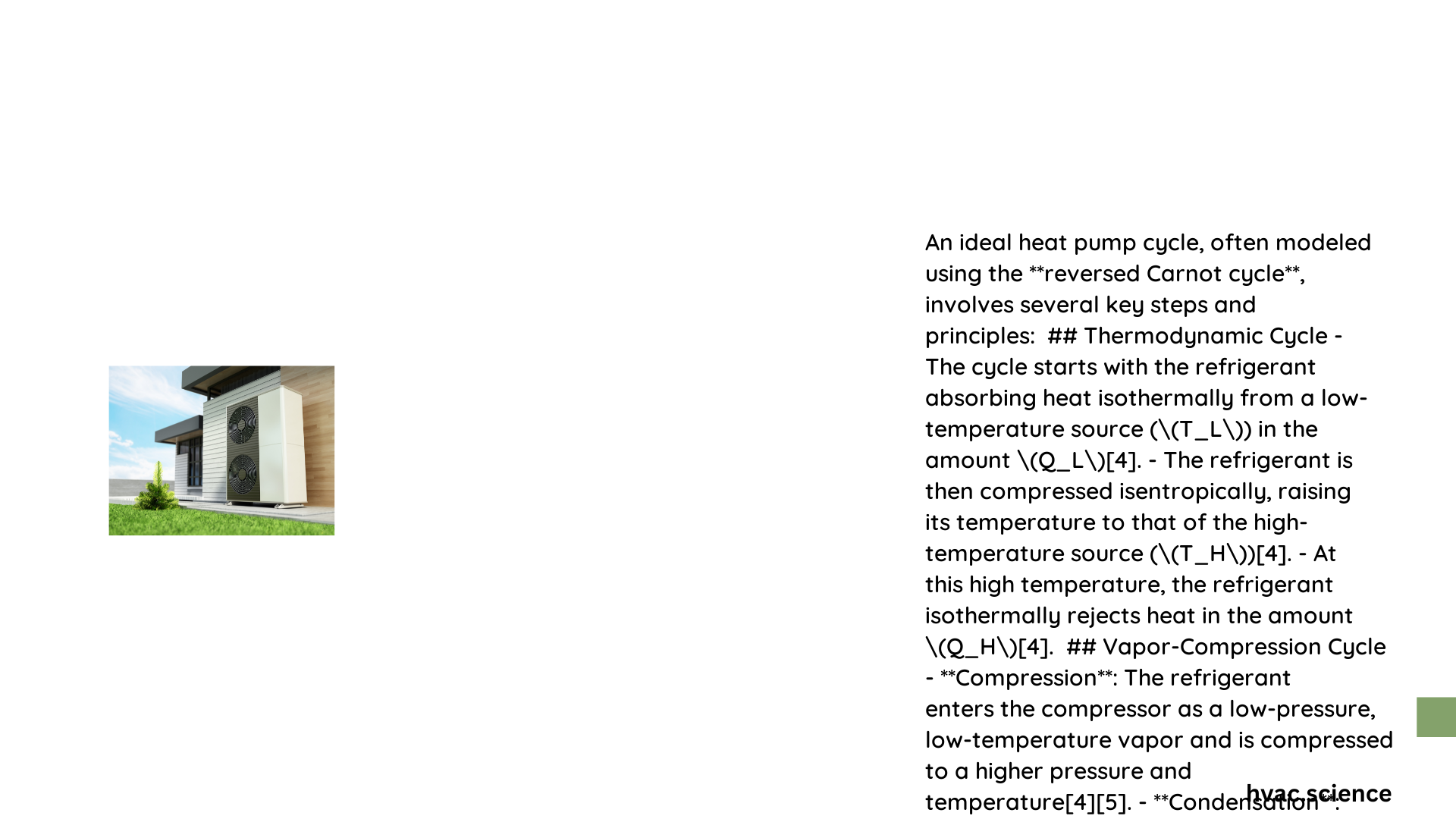The ideal heat pump cycle represents a sophisticated thermodynamic process that enables efficient heat transfer between different temperature reservoirs. By leveraging fundamental principles of thermodynamics, this cycle transforms low-temperature thermal energy into high-temperature heat through mechanical work, offering remarkable potential for sustainable heating and cooling applications across industrial and residential sectors.
What Are the Fundamental Thermodynamic Properties of the Ideal Heat Pump Cycle?
Refrigerant State Transformations
The ideal heat pump cycle involves four primary state transformations:
- Compression Stage
- Refrigerant enters as low-pressure, low-temperature vapor
- Pressure increases from 15 to 40 bar
- Temperature rises dramatically
-
Mechanical work input required
-
Condensation Stage
- High-pressure, high-temperature gas releases heat
- Complete phase transformation occurs
- Constant temperature process
-
Heat rejection to external environment
-
Expansion Stage
- High-pressure liquid passes through expansion valve
- Sudden pressure reduction
- Significant temperature drop
-
Partial liquid-vapor mixture formation
-
Evaporation Stage
- Cold, low-pressure mixture absorbs thermal energy
- Complete vaporization occurs
- Constant temperature process
- Heat absorption from surrounding environment
Performance Metrics and Efficiency Calculations
Coefficient of Performance (COP) Analysis
| Performance Parameter | Heating Mode | Cooling Mode |
|---|---|---|
| COP Formula | ( \frac{1}{1 – \frac{T_c}{T_h}} ) | ( \frac{T_c}{T_h – T_c} ) |
| Typical Value Range | 3.5 – 5.5 | 2.5 – 4.0 |
| Influencing Factors | Temperature Differential | Energy Input |
What Determines the Efficiency of an Ideal Heat Pump Cycle?
Key Efficiency Determinants
- Temperature Differential: Smaller gaps between hot and cold reservoirs increase efficiency
- Refrigerant Properties: Specific thermodynamic characteristics
- Compression Work: Energy required for state transformation
- Heat Transfer Mechanisms: Effectiveness of thermal exchange processes
How Do External Conditions Impact Heat Pump Performance?
Environmental and Operational Constraints
- Climate Sensitivity: Performance varies with ambient temperature
- Energy Source Considerations: Electricity cost and availability
- Installation Environment: Geographical and structural limitations
Advanced Technological Considerations
Emerging Innovations
- Advanced Refrigerants: Environmentally friendly alternatives
- Smart Control Systems: Adaptive performance optimization
- Hybrid Configuration: Integration with renewable energy sources
Technical Limitations and Practical Challenges
- Higher initial installation costs
- Complex maintenance requirements
- Performance degradation in extreme temperature conditions
Practical Applications and Potential Sectors
- Residential heating and cooling
- Industrial process heat
- Agricultural temperature management
- Data center thermal regulation
Technical Insights and Future Perspectives

The ideal heat pump cycle continues to evolve, presenting promising opportunities for sustainable thermal management. Ongoing research focuses on enhancing efficiency, reducing environmental impact, and developing more sophisticated technological solutions.
Recommended Design Considerations
- Minimize temperature differentials
- Select appropriate refrigerants
- Implement advanced control mechanisms
- Regular system maintenance
Mathematical Modeling Approach
Theoretical performance can be predicted using comprehensive thermodynamic equations, considering:
– Enthalpy variations
– Entropy changes
– Work input requirements
– Heat transfer coefficients
Reference:
– Industrialheatpumps.nl
– Wikipedia – Heat Pump Cycle
– ASHRAE Technical Resources
